World
View From Nepal: Has The India-Nepal Relationship Reached Its Nadir?
Slok Gyawali
Dec 05, 2015, 05:17 PM | Updated Feb 12, 2016, 05:31 PM IST
Save & read from anywhere!
Bookmark stories for easy access on any device or the Swarajya app.
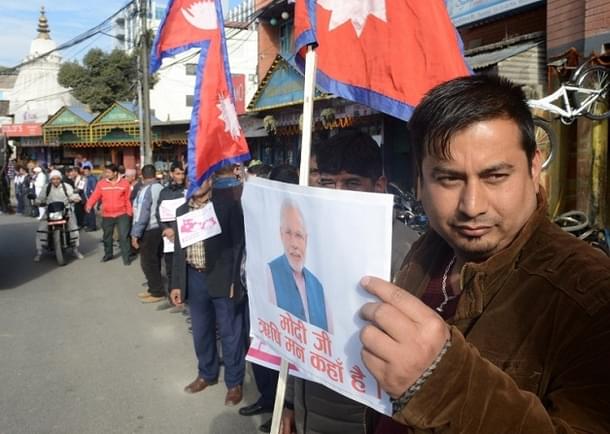
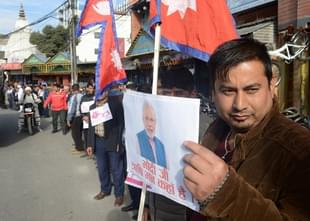
The way the last two months have played out will be remembered as possibly the lowest-point in relations between the two countries. Slok Gyawali reports from Kathmandu.
On November 29, the day Netra Bikram Chand-led CPN-Maoist imposed a ‘bandh’ to oppose Indian interference in Nepal I was standing in a queue in front of the ticket counter of Kumari Cinema in Kathmandu. Posters for the latest Deepika Padukone-Ranbir Kapoor starrer were on display. The turn-out was enviable for a Sunday – the first day of the work week here. “Do you think we’ll get a ticket?” inquired the man breathing down my neck. “It’s probably house-full,” I responded. Disappointed, he left the line. I bought tickets for a Nepali movie instead.
That very day the same faction ‘pressurized’ and threatened cable TV operators not to show Indian channels. Some operators complied while many chose to ignore it. Indian TV channels continue to spew drama in many Nepali households. This is not the first time Nepal’s cable operators have been asked to stop showing Indian channels. In September, the CPN-Maoist issued a similar directive; not many obliged, especially in Kathmandu. In fact, Nepal’s Ministry of Information and Communications asked the cable operators to ensure that no Indian channels were blocked.
Like all public transport plying the streets in Kathmandu during the current fuel crisis, the micro-bus I took to reach home after the movie, too was packed. The conductor, his body hanging by the open door, asked me to find space, if I can, on the vehicle’s roof. But people had covered almost every available inch. I squeezed myself next to a college student, all of us exposed to the cold winter wind.
My Bajaj motorcycle is parked at home with an empty fuel-tank. It’s been unmoved for over a month. One month into the crisis, which is now in its third month, I convinced myself that buying petrol in Kathmandu’s thriving black-market at Rs 400 per litre was better than waiting in line for over 36 hours to get the fuel at the government mandated price of Rs 104. Now I can’t decide which one is the better option.
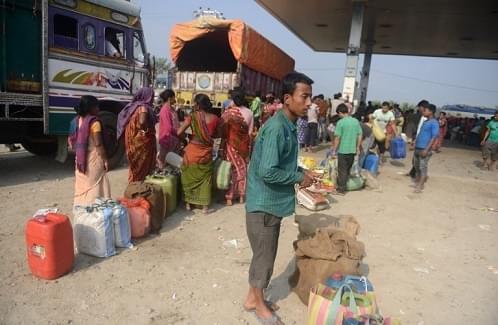
On the bus, the conversation invariably was about ‘the present situation’. The anger was directionless but palpable. First, India was blamed for engineering a humanitarian crisis and aiding the Madhesh based parties in pressuring Nepal’s government. Second, Madhesh-based Samyuka Loktantrik Madhesh Morcha, at the forefront of the protest, was blamed for being obstinate with their demands. But the choicest abuse and annoyance was reserved for hamrai neta – our own leader. “They have neither brains nor courage to do what is right”, says one. “This is only because they went to New Delhi and made promises that were impossible to fulfil,” adds another.
But Kathmandu is not the only place that’s angry. Almost regularly for over 100 days, people across the southern belt of Nepal, gathered to protest against the federal demarcation proposed in the new constitution. Unlike Kathmandu, the anger in Madhesh is not directionless –fingers are pointed and fists are raised towards the capital. Marginalised and discriminated, people have gathered at customs points with India to pressurise their own government. A struggle Kathmandu would remain oblivious to had it not affected the capital for so long.
Enter New Delhi, whose belligerent foreign policy (though it denies any involvement) over matters completely and undeniably internal to Nepal has allowed Kathmandu elites an excuse to shift attention from the main-concern of addressing legitimate Madhesi demands to India’s ‘bullying’ tactics. Before Kathmandu could feel and address the accumulated frustration in Madhesh, India’s high-handedness made it easier to use the anger against India as a bargaining chip to not address the concerns of its own people.
Granted New Delhi found itself in a place it didn’t want to be in after Nepal’s new constitution was declared, but the way the last two months have played out will be remembered as possibly the lowest-point in relations (political and social) between the two countries. Making demands on Nepal to change its constitution, Indian Oil Corporation (IOC) refusing to fill Nepali fuel tanks because of ‘orders from above’, and limiting other essential supplies have not helped Nepal to seek a solution.
Instead, this has encouraged smuggling and an increase in violence (by the Nepali state, India, and the Madhesi protestors) across Nepal’s southern belt. The UNICEF recently warned that over three million children under the age of five in Nepal are at risk of death or disease given the severe shortage of fuel, food, medicines and vaccines.
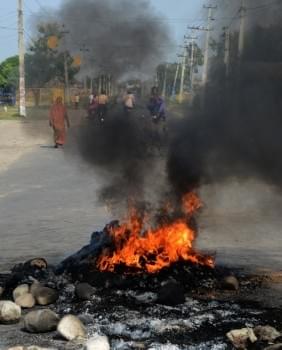
Yet, the crisis in Nepal seems to capture India’s attention only when the latter’s symbolic sensibilities are hurt: Indian channels not allowed in Nepal, or when 13 Indian SSB personnel were taken into custody, or when Lalu Prasad Yadav spoke-out against the Narendra Modi’s policy towards Nepal. And of course, to criticise Nepal’s links with China.
While the talk of anti-India sentiment dominates Indian consciousness anti-Nepal statements and action by India are pushed under the rug. To wit: BJP’s Kirti Azad recently asked Nepal to handover 15 of its districts to India, or risk it being annexed. On November 25, SSB personnel shot 4 Nepalis from across the border. 13 SSB personnel entered Nepal without permission, of which 6 were armed, and threatened villagers. And when Nepal Police took them into custody, it released them within 6 hours.
Then there is the question of China. The northern neighbour’s clout in Nepal, though growing, is nowhere near as significant as it’s made out in the Indian media. Anyone who’s been to Nepal will acknowledge that India’s presence in Nepal is irreplaceable; Chinese influence is dwarfed in front of it. For example, of the nine border points with China, only three are connected through roads, and trade through seven of them is mostly limited to the local-level.
Perhaps the most revealing thing about the blockade is how utterly dependent Nepal is on India: for medicines, for gas, for fuel, for paper, and even for daily supplies. It’s unsurprising that this blockade has permeated every aspect of Nepali life. The ethnic fabric of the country has come under stress, families and individuals have to worry about food, getting to work, to school, and then worry some more about how they will get back and how they will eat. Like all oppression, the crisis has subsumed all conversation into itself.
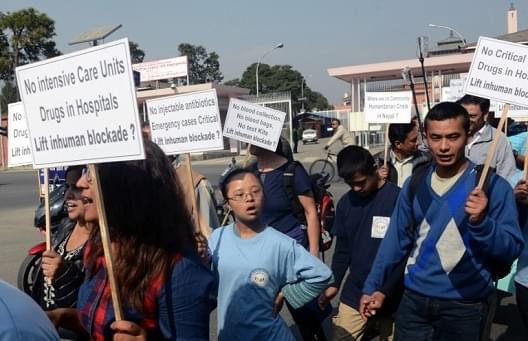
The legacy of kow-towing by Nepal’s politicians before Indian diplomats and politicians has ensured that India was, is and will be a part of Nepali politics. Admittedly, this sometimes benefits both countries. New Delhi has played referee and catalyst many a times. So when both Madhesh parties and Kathmandu demand that India not intervene, they often mean that India should only intervene when it favours their agenda.
This time, however, the consequence of intervention has been flagrant and India has pressed too hard and for far too long. This adding of fuel to the fire (what irony!) needs to stop. The All Party delegation visit to Nepal proposed by Sushma Swaraj is a good start. It would bode very poorly for relations if the situation is not resolved. For as Confucius said, ‘It is more shameful to distrust our friends than to be deceived by them’.
Slok Gyawali is a writer based in Kathmandu. You can follow him @slokgyawali





